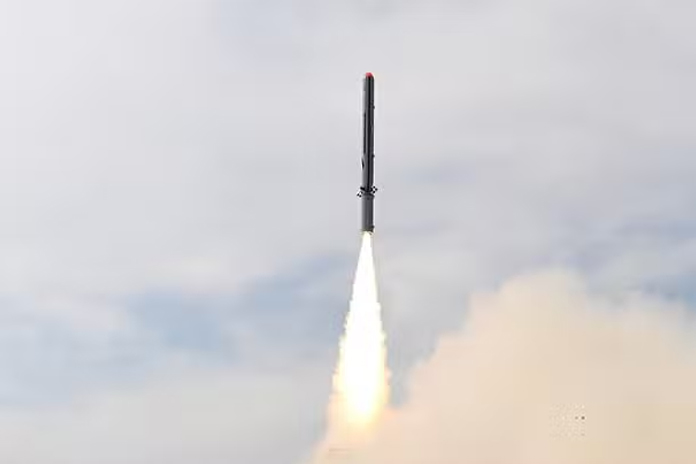India’s Defence Research and Development Organisation (DRDO) successfully flight-tested the first Long Range Land Attack Cruise Missile (LRLACM) on Tuesday.
The maiden test, held at the Integrated Test Range (ITR) in Chandipur, Odisha, was carried out from a mobile articulated launcher and marked a significant achievement, with the missile performing as planned and meeting all primary mission goals.
During the test, the LRLACM was closely monitored using an array of sensors, including radar, electro-optical tracking systems, and telemetry equipment placed along its flight path. The missile demonstrated precision waypoint navigation and successfully executed complex manoeuvres at varying altitudes and speeds.
Long Range Land Attack Cruise Missiles are a key addition to modern military arsenals, enabling long-distance strikes against strategic targets from stand-off distances, meaning the missile can be launched far from the target, keeping the launch platform and the personnel operating it safely out of harm’s way.
These missiles are typically subsonic and can follow terrain-hugging flight paths, making them harder to detect and intercept, thus allowing for a strategic advantage in penetrating enemy defenses.
Other examples of LRCMs include the US Tomahawk and Russia’s Kalibr, both known for their use in precise, long-range strikes.
Developed by DRDO’s Aeronautical Development Establishment (ADE) in Bengaluru, the LRLACM is a completely indigenous project. The missile’s components, except for a few sensors and accelerometers, are sourced locally.
Bharat Dynamics Limited (BDL) in Hyderabad and Bharat Electronics Limited (BEL) in Bengaluru have collaborated as Development-Cum-Production Partners, contributing to the missile’s integration and deployment. Designed for both ground-based and naval deployment, the LRLACM can be launched from mobile ground platforms and ships using a Universal Vertical Launch Module (UVLM), a system patented by BrahMos Aerospace and already operational on 30 Indian Navy vessels.
This missile is a Defence Acquisition Council-approved Mission Mode Project under the Acceptance of Necessity (AoN), emphasizing its strategic importance. With a planned range exceeding 1,000 kilometers, the missile will add significant strength to the Indian Armed Forces, especially the Navy, with its sea-skimming abilities.
Around 20 additional test flights are planned to fine-tune the missile’s performance, which also includes terminal homing through an indigenous radio-frequency seeker.
According to sources, the Indian Navy is expected to order around 200 LRLACMs, worth approximately Rs 5,000 crore, once DRDO completes the missile’s trials.
The LRLACM is a Defence Acquisition Council-approved, AoN-sanctioned Mission Mode project with a set timeline for entry into service.
(with Agency inputs)










